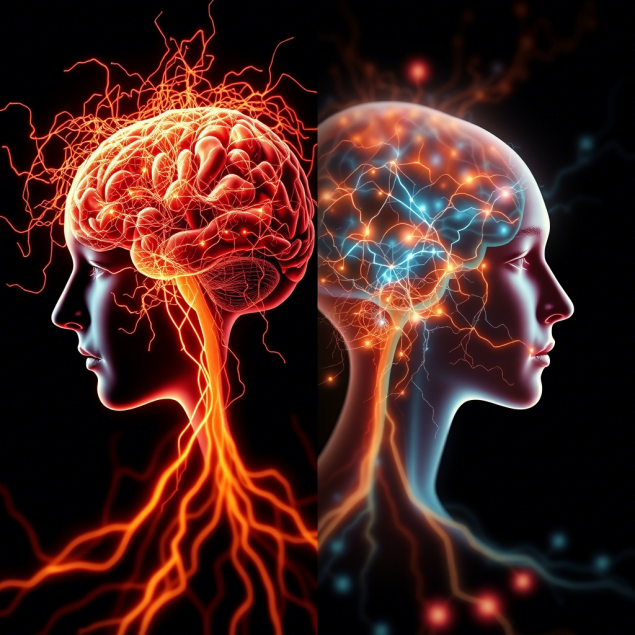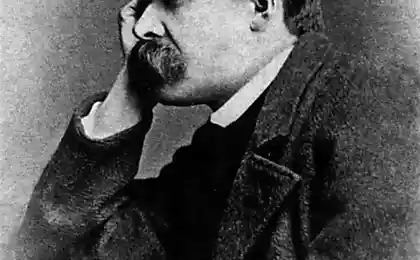170
The art of serenity: why it is important to be able to let go

In today’s world, where speed, efficiency, and productivity have been elevated to absolutes, we are so used to being in constant motion toward goals that we have almost forgotten the art of serene existence. Our calendars are filled with meetings, task lists are endless, and thoughts are busy planning for the future or worrying about the past. But what if the key to a fulfilling life is not desire, but letting go?
Paradoxically, it is precisely when we give up control and stop worrying about the consequences that we often experience the most vivid and memorable experiences. Scientific studies confirm that the state of carelessness not only brings emotional satisfaction, but also contributes to better mental and physical health.
Neurophysiology of carelessness: what happens in the brain
When we are in a state of constant tension and control, our brain actively engages the prefrontal cortex, the area responsible for planning, decision-making, and self-control. Although this part of the brain is incredibly important for survival and achievement of goals, its continuous activity leads to exhaustion of the nervous system.
Research by Matthew Keelingsworth of Harvard University has shown that people whose minds are constantly busy thinking about the past or future experience less happiness than those who know how to be in the present moment. In this case, the default system of the brain, activated in a state of rest and serenity, plays a key role in the formation of creative ideas, self-awareness and emotional well-being.
The state of flow: the highest form of carelessness
Psychologist Mihai Csikszentmihalyi described a special psychological state, which he called flow. In this state, a person is completely absorbed in activities, loses the sense of time and forgets about external worries. Interestingly, the flow state occurs when we stop worrying about the results and fully surrender to the process.

According to a University of Chicago study, people who are able to achieve flow at least once a day report significantly higher levels of life satisfaction and resilience. It is noteworthy that the achievement of this state does not require special skills or conditions - just learn to let go of control and fully immerse yourself in the current activity.
Historical Perspective: The Wisdom of Ancient Practices
The idea of letting go of control and carefree existence is not new. Ancient philosophical systems offered similar concepts long before the advent of modern psychology.
In Taoism, this concept of Wu-wei is the principle of non-action or non-violent action, implying a harmonious existence in accordance with the natural course of things. Buddhism teaches non-attachment to the results and acceptance of the present moment. Even the Stoics in ancient Greece developed the concept of distinguishing things that are within our control from things that are beyond our control.
We suffer not because of what is happening, but because of our attitude to what is happening. - Epictetus
Practical recommendations: how to learn to let go
7 Strategies for Developing the Art of Carelessness
- Mindful meditation. Even 10 minutes of daily meditation help to develop the ability to notice your thoughts without attachment to them. Studies show that regular practice of mindfulness reduces the activity of the amygdala, the anxiety center in the brain.
- Three-question technique. If you have a worrying situation, ask yourself three questions: “Can I make a difference?”, “Will my worry be beneficial?”, “Will it be important in a year?” This method helps to eliminate minor problems.
- Planned time for concern. Set aside 15-20 minutes in your schedule to think about problems. When disturbing thoughts occur at another time, postpone them until that time.
- The ritual of letting go. Create a symbolic gesture or action to release unnecessary thoughts—for example, write down anxiety on paper and burn it, or imagine releasing a balloon with a problem.
- Practicing gratitude. Write down three things you are grateful for every day. It redirects attention from problems to positive aspects of life.
- Physical activity in a state of awareness. Choose an exercise that allows you to fully focus on your body sensations – swimming, yoga, running, or even walking can become a form of movement meditation.
- Here and Now Technique. When you feel anxious, notice five things you see, four things you can touch, three things you hear, two smells, and one taste. This exercise instantly brings you back to the present moment.
History of Transformation: From Control to Freedom
Marina, a 42-year-old financial analyst, has lived in perfectionism and total control for years. Her diary was painted in minutes, and any deviation from the plan caused great anxiety.
“I was sure that if I relaxed my control a little bit, my whole life would collapse,” she says. Paradoxically, it was when I was forced to let go of control due to an unexpected illness that I found that many things worked out on their own, and some of the problems I was worried about turned out to be irrelevant.
After her recovery, Marina introduced several rituals into her life to help maintain a balance between purposefulness and letting go. She now begins every morning with meditation, and once a week she arranges a “day without plans” when she allows herself to follow spontaneous desires.

Scientific evidence for the effectiveness of carelessness
The results of neurobiological studies in recent years convincingly prove the positive effect of the state of carelessness on health. Researchers at the University of California, San Francisco found that people who practice mindful letting go demonstrate:
- Reduced levels of cortisol, the stress hormone
- Improved immune function
- Higher activity of telomerase, an enzyme associated with longevity
- More efficient operation of the parasympathetic nervous system, responsible for the restoration of the body
- Strengthening neural connections in areas of the brain responsible for emotional regulation
Particularly interesting is a University of Wisconsin study, which found that regular practice of serenity and letting go is associated with an increase in gray matter volume in the prefrontal cortex and hippocampus, areas associated with decision-making and memory.
Balance between purposefulness and carelessness
It is important to understand that the art of carelessness does not call for complete abandonment of goals or irresponsibility. It is about achieving a wise balance between aspiration and letting go.
As psychologist Carl Jung notes, “The irony of life is that we only achieve what we want when we stop desperately striving for it.” This paradox is confirmed by many studies: excessive focus on the result often prevents its achievement, while the ability to enjoy the process and let go of control creates optimal conditions for success.
Cyclical life: periods of tension and relaxation
Nature exists in cycles: day is replaced by night, summer - in winter, tide - ebb. Human life and psyche also need an alternation of activity and rest, tension and relaxation.
Chronobiology studies show that our bodies function in accordance with circadian rhythms, creating natural periods of high productivity and necessary rest. Resistance to these rhythms—an attempt to be constantly active and controlling—depletes the body’s and psyche’s resources.
The path to a full life through the art of letting go
The ability to let go of the situation and enjoy carelessness is not a luxury, but a necessary skill for a full life in the modern world. When we free ourselves from constant control and allow ourselves to simply be, we not only improve our psychological and physical condition, but also open the way to a deeper experience of life.
The practice of conscious letting go is not a one-step decision, but a gradual process that requires patience and consistency. Start small: take a few minutes a day of meditation, try to give up planning a weekend, or trust your intuition to make a small decision.
Remember, true wisdom lies not in trying to control the river of life, but in being able to swim with it, enjoying every moment of this amazing journey.
Glossary of terms
Prefrontal cortex
The area of the brain located in the front of the frontal lobes. Responsible for complex cognitive processes: planning, decision-making, predicting consequences, social behavior and self-control.
Brain failure
Neural network of the brain, active at rest and in the absence of focus on external tasks. It is associated with functions such as self-awareness, thinking about oneself and others, remembering and planning for the future.
Stream
Psychological state of total immersion in activity, accompanied by high concentration, a sense of control, loss of self-awareness and distortion of perception of time. The term was coined by psychologist Mihai Csikszentmihalyi.
Woo-wei
A concept in Taoist philosophy, literally meaning “not doing” or “not doing.” It means acting in accordance with the natural course of things, without forcing or resisting natural processes.
Detachment
In Buddhist philosophy, a state of lack of attachment to desires, opinions, and expectations. It does not mean apathy or indifference, but rather acceptance of reality as it is.
mindfulness
The practice of mindfulness is focusing on the present moment, accepting your thoughts and feelings without evaluating them. Scientifically proven its positive effect on mental health.
Conscious letting go
The practice of intentionally releasing negative thoughts, feelings, or situations with full awareness of the process, as opposed to suppressing or avoiding.
cortisol
Stress hormone produced by the adrenal glands. Chronically elevated cortisol levels have been linked to a host of negative health effects, including suppression of the immune system and metabolic disorders.
telomerase
An enzyme that protects the ends of chromosomes (telomeres) from shortening during cell division. Telomerase activity is associated with the processes of aging and longevity.
If you want to harm another person, you punish yourself.
About depreciation: psychology, ecology of life and the path to maturity























